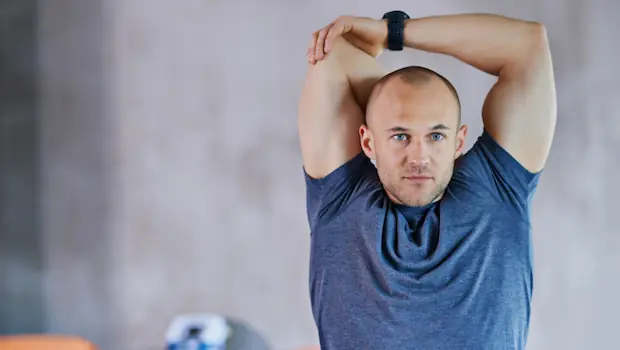
We've all been there.
The day after a brutal squat session or copious amounts of dumbbell flies and bicep curls, you're finding yourself cringing as you walk down a flight of stairs or reach up to grab your toothbrush.
You're sore and maybe cursing that last set of deadlifts from last night.
DOMS
The soreness you feel can be attributed to delayed onset muscle soreness (or DOMS as it's more affectionately referred to), and it's a phenomenon that's been well researched over the years. The feeling often manifests within six to eight hours post-exercise and peaks up to 48 hours afterward.
Some people seek out DOMS no matter what. They gauge the effectiveness of their training sessions on how much of it they can elicit, thinking the more sore they are, the more progress they've made.
Others avoid DOMS like a bad movie. For the non-masochistic, being sore isn't pleasurable. These people often find themselves wondering why they never make any progress.
So, which vantage point is correct?
Both.
What Causes DOMS?
First and foremost, it's important to understand what doesn't cause DOMS: lactic acid.
Everyone from our middle school gym teacher to our mailman used to attribute soreness with a build-up of lactic acid in the muscle. This myth was debunked decades ago.
Ironically, despite all the research, there's no clear-cut winner as to the exact mechanism. Our best guess, according to a 2013 study by Bret Contreras and Dr. Brad Schoenfeld, is that soreness comes from inflammation.
"DOMS appears to be a product of inflammation caused by microscopic tears in the connective tissue elements that sensitize nociceptors and thereby heighten the sensations of pain," the study states.
People Are Different
When it comes to soreness and whether or not it's mandatory to make progress in the gym, the answer is a loaded one.
In order to progress—whether your goal is to add muscle mass or lose fat—it's crucial to consistently challenge the body to adapt. This is done by making your muscles work—pushing things, pulling things, carrying things and doing anything else to add variety to your workout regimen.
When you try a new workout or unfamiliar exercises, your body is going to respond with some feedback on subsequent days. The common response? Muscle soreness.


